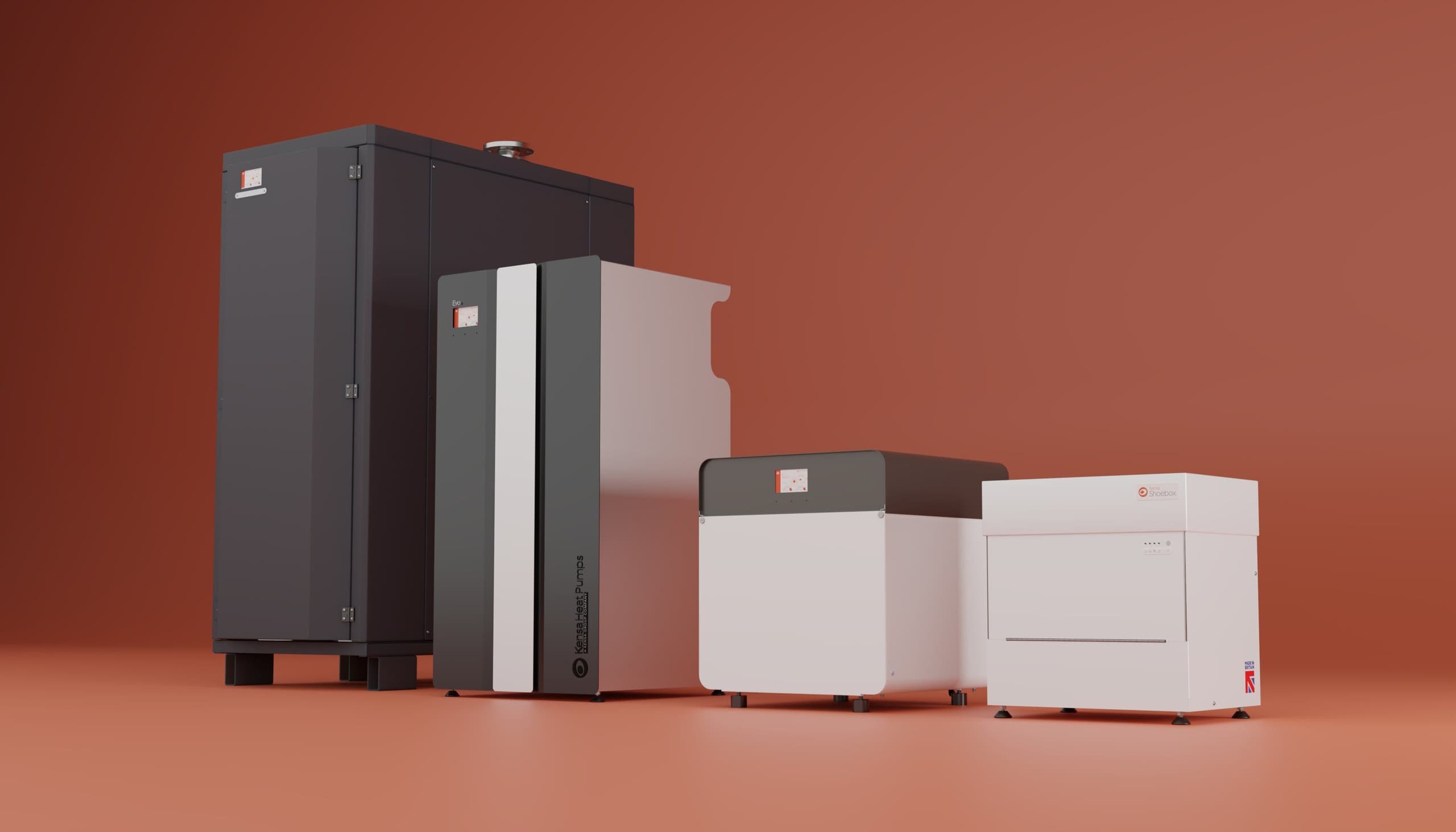On Friday, 2nd December, Sir Nigel Wilson, CEO of Legal & General, officially opened the UK’s largest production facility dedicated to ground source heat pumps* The Kensa Group’s factory and office in a celebration of British manufacturing, green growth, and progress towards a low carbon economy.
The modern office and large production facility, located at Mount Wellington Mine in Truro, Cornwall, was officially opened in a ribbon-cutting ceremony by Sir Nigel, followed by a reception and site tour of the facilities.
Earlier this year, Legal & General Capital (LGC), the alternative asset platform of Legal & General Group, made an  Kensa and Legal & General celebrate a greener future with official factory & office openingPress Release£8 million investment into the Kensa Group, the leading UK manufacturer and installer of ground source heat pumps. This brought their total investment in the organisation to £15.7 million over two years.
Kensa and Legal & General celebrate a greener future with official factory & office openingPress Release£8 million investment into the Kensa Group, the leading UK manufacturer and installer of ground source heat pumps. This brought their total investment in the organisation to £15.7 million over two years.
The capital supports The Kensa Group as it continues to scale up the deployment of low carbon ground source technology and networks to meet government targets, whilst realising LGC’s ambitions to support the UK’s transition to clean energy and L&G Group’s focus on climate and inclusive capitalism.
In the 24 months since LGC became shareholders in The Kensa Group, the manufacturer has broken records by doubling the amount of ground source heat pumps made at the facility, with a plan in place to increase output rapidly by a further 50% to meet demand.
The factory has the capacity to manufacture 30,000 ground source heat pumps every year – providing the equivalent carbon saving of taking 60,000 cars off the road. Kensa’s own heat pumps provide the factory and offices with underfloor heating, hot water and cooling by exchanging heat with water from a  The Dry, Mount Wellington MineCase Studyflooded mine shaft on the historic site.
The Dry, Mount Wellington MineCase Studyflooded mine shaft on the historic site.
Kensa has also secured new engineering talent allowing it to push the boundaries of product development within the heat pump industry. These innovations include – The Kensa Q – a new commercial range capable of high heat loads, and a highly flexible storage heat pump which can be run when electricity is at its cheapest and the heat stored for use later when it is needed.
Having pioneered the use of Networked Heat Pumps on Shared Ground Loop Arrays to efficiently and cost-effectively allow multiple-occupancy dwellings, such as tower blocks, and clusters of neighbouring homes to switch to ground source heat pumps, Kensa is focused on expanding the scale of this renewable infrastructure to heat whole streets and entire communities.
Employment in the Kensa Group has more than doubled from 80 employees in 2020 to 170 in 2022, and this growth will continue. Revenues have also doubled, from £15.5 million in 2020 to £31.5 million this year, leading to Kensa being recognised in the  Kensa Group recognised in FEBE 100 Fast-Growing Founder-Led Private CompaniesPress ReleaseFEBE Growth 100 list.
Kensa Group recognised in FEBE 100 Fast-Growing Founder-Led Private CompaniesPress ReleaseFEBE Growth 100 list.
Sir Nigel Wilson, CEO of Legal & General, said:
Climate is not only the most urgent issue but also the biggest investment opportunity of our lifetimes. Investing in businesses that support the clean energy transition alongside significant job creation is central to how we deliver inclusive capitalism, so I’m delighted that Legal & General are continuing to support The Kensa Group’s expansion. The new, significantly larger factory, will accommodate the growing demand for ground source heat pumps as home owners and property developers look for a reliable source of low carbon heating.
Dr Matt Trewhella, CEO of The Kensa Group, said:
We are delighted that Sir Nigel Wilson, CEO of Legal & General Group is able to officially open our fantastic new factory and office. For Kensa and L&G, coming together at this event showcases our shared ambition to play a pivotal part in the UK’s solution to reach net zero emissions by 2050.
He continues:
Heat pumps are key to the low carbon economy, but the whole heat pump supply chain, including Kensa, will have to expand dramatically to meet the UK’s 2028 heat pump installation target.
The investment from Legal & General Capital has allowed us to significantly step up our efforts in areas such as R&D and operations, as we continue to prepare for further rapid growth.
The partnership between Kensa and Legal & General is creating more skilled jobs and boosting British manufacturing.
The Heat Pump Association (HPA) states that 50,200 installers are needed by 2030 to deploy 1 million heat pumps p.a. Kensa suggests that supporting UK manufacturing would create a further 15,000 (high-paid) jobs, and installing networked heat pumps would create an additional 25,000 UK jobs in infrastructure provision, such as drilling boreholes.


